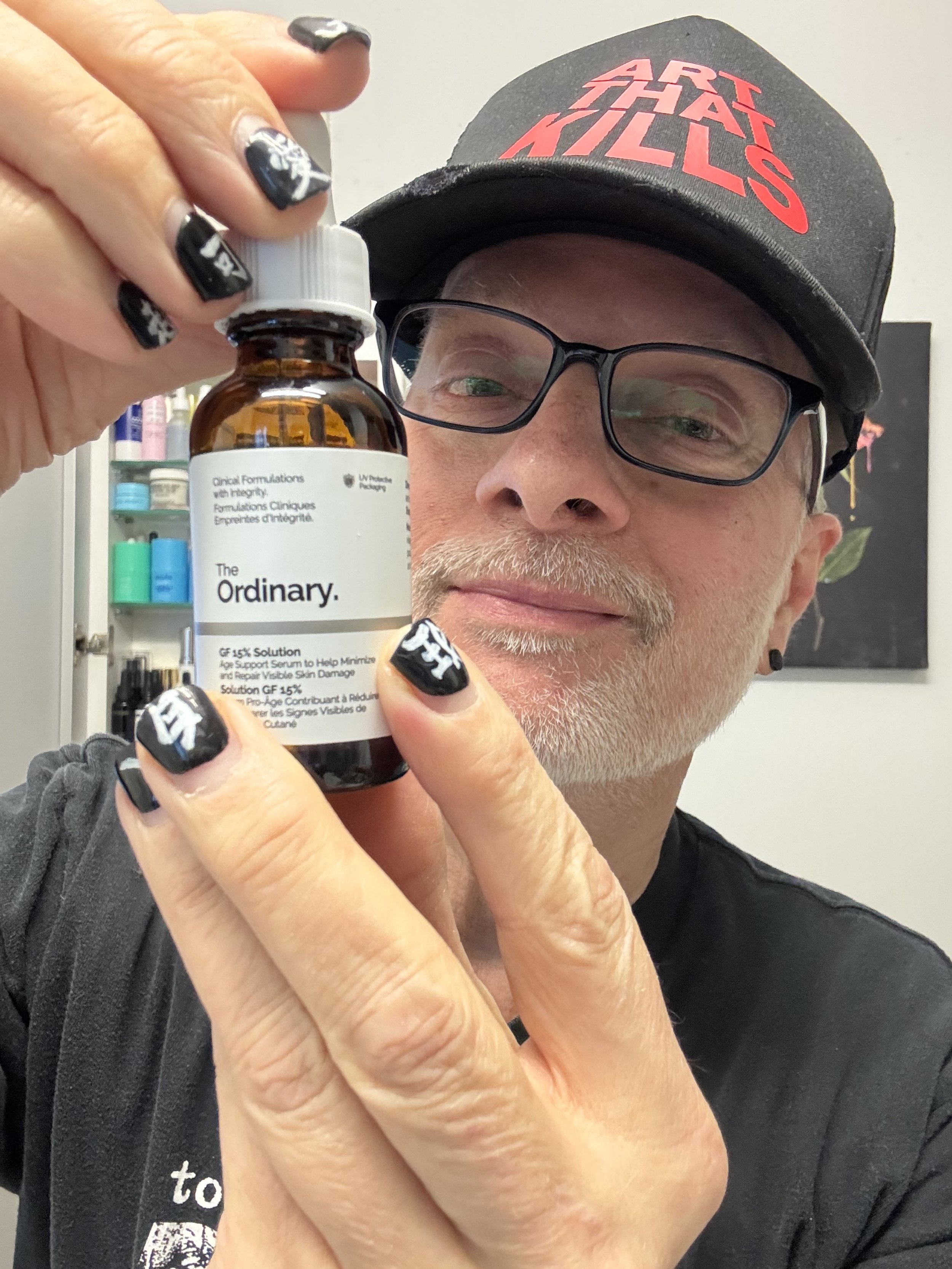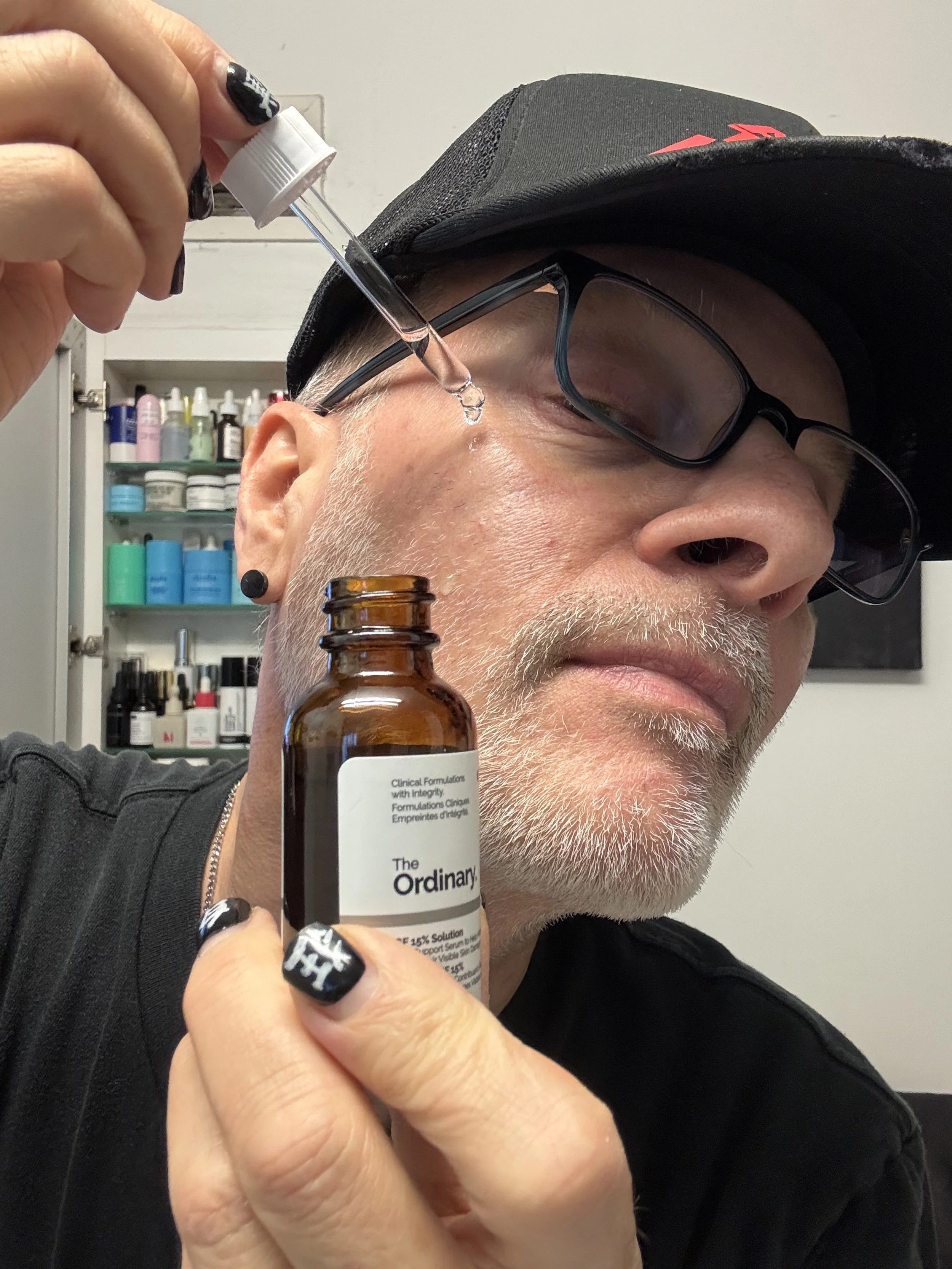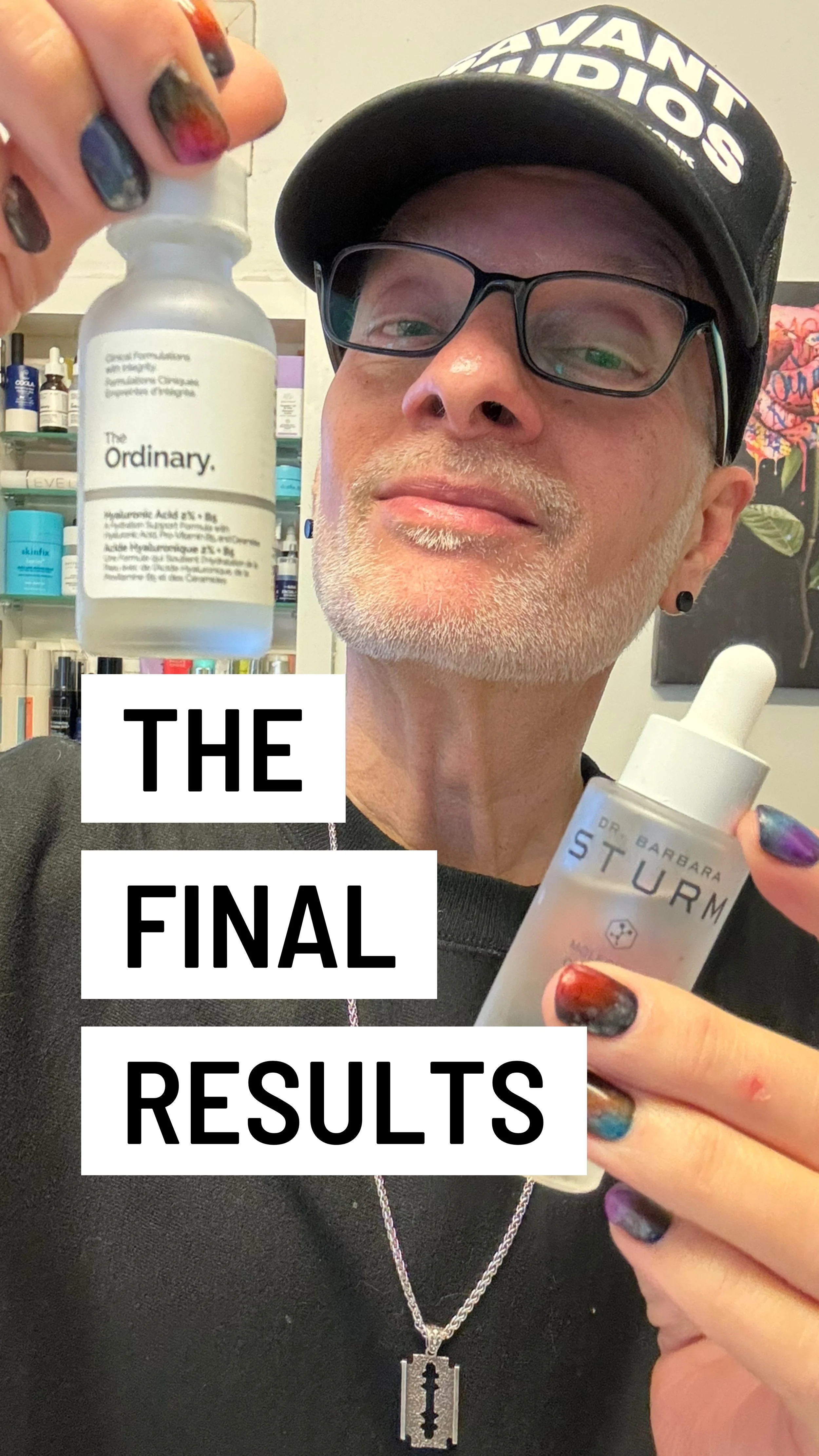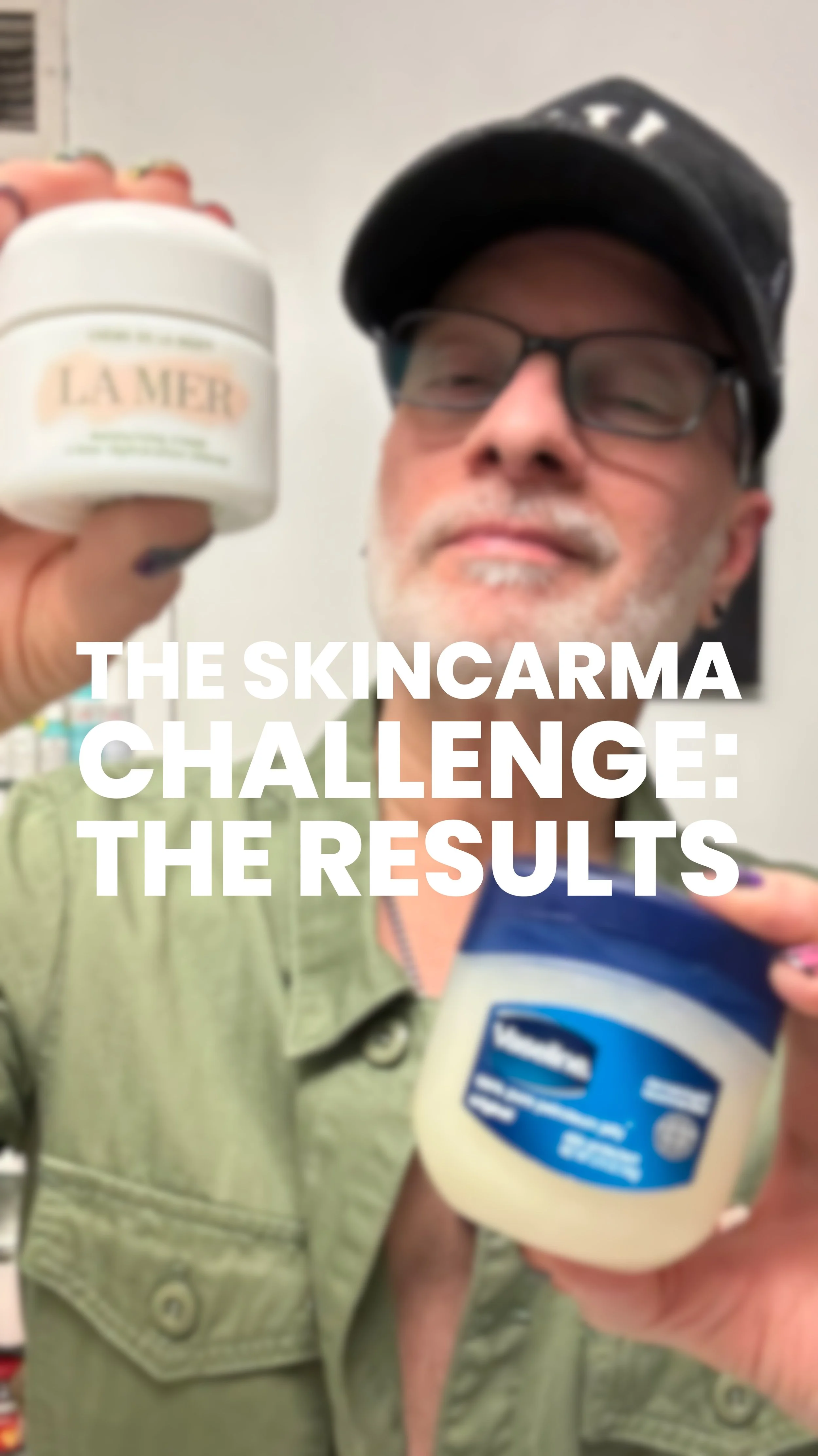THE ORDINARY GF 15% AGE SUPPORT SERUM PRODUCT REVIEW - What are growth factors? What do growth factors in skincare do? What does The Ordinary GF 15 do?
There’s no doubt that skincare innovation has accelerated markedly in the past year.
Few people had ever heard of exosomes before anti-aging serums with exosomes suddenly hit the consumer market after a decade as your dermatologist’s best kept secret.
I explored common questions like “what are exosomes” and “what do exosomes do for your skin” on my podcast: Demystifying Exosomes with Board Certified Dermatologist Dr. Jen Haley. You can catch it on Apple Podcasts here and Spotify here.
Just a few weeks ago, The Inkey List introduced their $22 Exosome Hydro-Glow Complex Serum, making exosomes a household word – and bringing an affordable face serum with exosomes to Sephora’s shelves. Even Forbes magazine picked up on the hot new ingredient trend in a recent article titled, Exosomes: The New Frontier Of Skincare.
But while exosomes are new to the scene, retinoids like Retinol and epidermal growth factors (EGFs) seeped out of derm offices years ago. Retinol face creams have been widely available since the early 1990s. SkinMedica launched their iconic $230 TNS Recovery Complex growth factor serum in 2001. And it’s been 15 years since Bioeffect’s EGF Serum with epidermal growth factors was first introduced. At $175 for a 0.5 oz. serum, it’s hardly accessible to most consumers.
As with so many ingredient technologies, The Inkey List and The Ordinary make many of the best skincare ingredients accessible to the rest of us. This month, The Ordinary introduced their new GF 15% Age Support Serum – an anti-aging treatment designed with three different types of growth factors, including EGF, IGF, and TGF.
My detailed review of The Ordinary’s GF 15% Age Support Serum is just below.
What are growth factors? Well, they’re naturally occurring, specialized proteins that act as signaling molecules, regulating cellular growth, proliferation, and even cell differentiation in the skin.
In dermatology, growth factors were initially popularized for their unique wound healing properties and benefits for tissue repair after in-office procedures. Epidermal growth factors, for example, are used to accelerate post-treatment recovery from invasive procedures like microneedling, laser treatments, chemical peels, and IPL therapy.
Like exosomes, which are most effective when applied by a dermatologist on damaged skin, or through microneedling, growth factors are challenged by the 500 Dalton Rule which governs the penetration of molecules into the skin barrier.
Growth factors are much larger than exosomes, with a molecular weight often greater than 15,000 Daltons (Da) – way beyond the 500 Da considered ideal for penetration. They’re also hydrophilic, meaning they have an affinity for water; they interact with water molecules and dissolve or disperse in water. The skin barrier – and greater epidermis below the stratum corneum – are rich in lipids, or fats, like ceramides, cholesterol and fatty acids. Because of the skin’s composition, hydrophilic molecules like growth factors simply do not penetrate well, if at all, limiting their ability to perform as desired when applied topically.
For more on the Dalton Rule and which ingredients penetrate the skin barrier (and which don’t!), catch my podcast episode “Demystifying Peptides – the Secret to Getting Your Bounce Back”.
THE BEST PRODUCTS FROM THE ORDINARY
Before I get to my detailed The Ordinary GF 15% Age Support Serum product review, I wanted to demystify growth factors and specifically the growth factors featured in The Ordinary’s new anti-aging serum with growth factors.
1. What are growth factors?
Growth factors are naturally occurring proteins that play a crucial role in regulating various cellular processes in the body. Considered “signaling molecules,” they stimulate cell growth, cell proliferation and differentiation, tissue repair, and even cell survival.
Growth factors are typically secreted by cells and can act on nearby cells or on the cells that produced them. The body creates growth factors to heal skin that’s been damaged. Importantly, skin damage is most often the result of photoaging, or sun damage – responsible for 90% of the visible signs of skin aging.
As a key driver of cell turnover, growth factors promote the production of structural proteins like elastin and collagen, which are crucial for combatting skin damage and for preventing the formation of fine lines and wrinkles in the complexion.
Similar to collagen loss, as you age, the level of growth factors in the body decreases, and skin’s ability to repair itself diminishes. In many ways, this is an important factor in skin aging – and in the rate at which you appear older.
Sources: NIH, National Library of Medicine, PubMed Central - Physiology, Growth Factor; NIH, National Cancer Institute - Growth Factors; Growth factor - Wikipedia; The Skin Cancer Foundation - Photoaging: What You Need to Know About the Other Kind of Aging
“Responsible for 90 percent of visible changes to the skin, photoaging is a direct result of cumulative sun damage you’ve been exposed to throughout your life.”
2. What do growth factors in skincare do?
While they sound like sexy scientific innovation, growth factors are not new to skincare; they were first introduced into skincare products in 1999. Growth factors play a crucial role in multiple processes within the skin; however, due to their large molecular weight, topical growth factors don’t and can’t do everything they are known to do inside the body.
When applied to the skin, growth factors may have some ability to interact with receptors on the surface of skin cells. The main purpose of growth factors in skincare is to support the skin’s natural repair and regeneration mechanisms, a crucial process that regulates the appearance of aging in the complexion. With the potential to boost collagen production and promote cell turnover, growth factors can help target the appearance of fine lines and wrinkles, improve skin texture, and even out skin tone.
Even so, powerful actives like Retinol and Vitamin C are far more effective at stimulating collagen production in the skin. Unlike growth factors, both molecules fall below the 500 Dalton Rule governing ingredient penetration. Because of this, Retinol and Vitamin C are highly effective at promoting collagen production, a process that shows results in about six months of continued use.
Growth factors may also help strengthen the skin barrier (similar to Niacinamide), making the barrier more resilient to external environmental stressors like UV and pollution.
Sources: Paula’s Choice - Growth Factors At a Glance; The Ordinary - What Are Growth Factors in Skincare? Biopelle - How Do Growth Factor Skin Care Products Benefit You?
3. Is growth factor better than retinol?
Growth factors and retinoids like Retinol are both highly sought-after anti-aging ingredients, but they work differently in the skin. Their ability to perform topically is a key factor in the benefits of each for skin health and youthfulness. Due to simple science, Retinol is better than growth factors for promoting skin health and repairing the signs of aging.
Why? Well, it comes down to molecular weight. Due to a fairly large molecular weight that can exceed 15,000 Da, growth factors are not able to penetrate the skin barrier as effectively as Retinol. In comparison, a common Retinol molecule has a molecular weight of 286.45 Daltons – well below the 500 Dalton Rule governing ingredient penetration.
Retinoids like Retinol are well-established for their ability to effectively increase cell turnover and stimulate collagen production to reduce fine lines and improve skin texture. Retinol is considered the gold standard in anti-aging skincare due to its proven effectiveness and extensive research supporting its efficacy.
Growth factors, on the other hand, are specialized proteins that stimulate cell growth and collagen production. They can improve skin texture, firmness, and overall appearance without the potential irritation sometimes associated with retinol use.
Yet, due to the simple science surrounding ingredient penetration through the skin barrier, Retinol is exceedingly more effective as an anti-aging active than growth factors. Growth factors and Retinol can complement each other in a skincare routine. While dermatologists recommend using both for comprehensive anti-aging benefits, if you are looking for the best anti-aging solution, retinoids are the way to go.
Sources: The National Institute of Standards and Technology - Retinol; Healthline - Yes, Retinol Is Safe — When Used Correctly. Here’s How to Get Started; Business Insider - Dermatologists say people with sensitive skin should try EGFs, a less drying alternative to retinol
4. What does The Ordinary GF 15 do?
The Ordinary’s GF 15% Age Support Serum is one of the most comprehensive anti-aging serums with growth factors. It’s infused with three growth factor technologies: EGF, IGF-1, and TGFβ-2 – components of the skin essential for skin repair, renewal and youthfulness.
Within the skin, growth factors perform key functions, including signaling its natural repair mechanisms. However, due to their large molecular weight that can exceed 15,000 Da, growth factors are not able to penetrate the skin barrier very effectively – if at all. This simple science prevents them from performing identical functions when applied topically.
Still, The Ordinary’s GF 15% Age Support Serum can help to improve skin health by strengthening the skin barrier and helping to repair visible skin damage to some degree. The Ordinary claims that their new growth factor serum can help to “regenerate the look of skin” to visibly reduce the appearance of “fine lines and wrinkles, including crow’s feet, forehead lines, and smile lines.”
Additionally, the brand claims that the new GF 15% Age Support Serum promotes elasticity, retexturizes rough skin, and firms the face and neck. There is no significant clinical data supporting the claims. (You can find the full product claims and even test results on the brand’s website here.)
Explore my top picks of the best products from The Ordinary on the blog here.
Sources: The Ordinary - What Are Growth Factors in Skincare?
5. Product Review
What The Ordinary does best is to bring simple, pro-skin health molecules to the broadest range of consumers. This strategy is most beneficial when the best anti-aging actives are expensive or priced out of reach by luxury skincare brands.
This is certainly the case with growth factors, where the best growth factor serums and creams have traditionally cost significantly more than $100 an ounce. But here’s the simple truth about growth factors: they have a large molecular weight, significantly restricting their ability to penetrate the skin barrier.
The 500 Dalton Rule cannot be set aside because it doesn’t fit the product messaging of a skincare marketer – whether the product is SkinMedica’s $230 TNS Recovery Complex or The Ordinary’s GF 15% Age Support Serum at just $15.50 – a fraction of the cost.
(See my deep dive above titled “What do growth factors in skincare do?” for more on the 500 Dalton Rule governing ingredient penetration.)
To be clear, The Ordinary’s new serum features three distinct growth factors: EGF, IGF-1, and TGFβ-2. These appear in the product INCI as Nicotiana Benthamiana Hexapeptide-40 sh-Oligopeptide-1 (EGF), Nicotiana Benthamiana Hexapeptide-40 sh-Polypeptide-76 (TGF) and Nicotiana Benthamiana Octapeptide-30 sh-Oligopeptide-2 (IGF).
The molecular weights of each of the three growth factors included in The Ordinary GF 15% Age Support Serum all exceed the 500 Dalton Rule governing ingredient penetration:
Nicotiana Benthamiana Hexapeptide-40 sh-Oligopeptide-1 (EGF): Estimated molecular weight: ~660–1,500 Da; Nicotiana Benthamiana Hexapeptide-40 sh-Polypeptide-76 (TGF): Estimated molecular weight: >10,000 Da; Nicotiana Benthamiana Octapeptide-30 sh-Oligopeptide-2 (IGF): Estimated molecular weight: ~7,480–8,500 Da
This conundrum is not exclusive to growth factors. Similarly, collagen (300,000 Da) and Hyaluronic Acid (6,000 Da to 10 million Da) do not penetrate the skin barrier well, if at all. However, all three molecules – growth factors, collagen and HA – are considered beneficial to skin health.
While topical collagen doesn’t replenish skin’s collagen levels, it can still moisturize the skin. Hyaluronic Acid applied topically doesn’t refill skin’s water reserves, but it can pull water into the skin surface to plump and soften the skin.
What about the The Ordinary’s GF 15% Age Support Serum? Well, the formula does have a lightweight texture that’s easily absorbed by the skin. When used as a component in a comprehensive skincare routine, it can help improve skin health by strengthening the skin barrier and may even help to repair some visible skin damage. Just not the way growth factors in the skin do from within.
6. Pros & Cons
What I like about it: The Ordinary GF 15% Age Support Serum is a pro-skin health anti-aging serum that helps to strengthen the skin barrier to defend against aging. I love the lightweight texture and layerability of the formula.
What I don’t like about it: While I love the lore around growth factors as much as anyone, they simply cannot do what they do in the body when applied topically.
Who it’s for: All skin types.
SHOP THE BLOG: Want to try it for yourself? Purchase The Ordinary GF 15% Age Support Serum for $15.50 here.
FIND OUT WHICH SERUM PERFORMED BETTER – AND BY HOW MUCH!
The Ingredient List of The Ordinary GF 15% Age Support Serum:
 sii|h 0 0, Trisodium Ethylenediamine Disuccinate chel, Citric Acid buff, Sodium Citrate chel|buff, Phenoxyethanol pres, Chlorphenesin pres|amic
sii|h 0 0, Trisodium Ethylenediamine Disuccinate chel, Citric Acid buff, Sodium Citrate chel|buff, Phenoxyethanol pres, Chlorphenesin pres|amicIS IT REALLY A SCAM?
Find out on my TikTok channel.
WATCH MY VIDEO REVIEW
THE BEST NIACINAMIDE SERUMS FOR CLOGGED PORES AND A BRIGHTER COMPLEXION
ON MY YOUTUBE CHANNEL HERE
WATCH MY VIDEO REVIEW OF
SKINCARE HACKS: GLYCOLIC ACID IS THE NATURAL DEODORANT THAT WORKS!
ON MY YOUTUBE CHANNEL HERE
WATCH MY VIDEO REVIEW OF
MY FAVORITE HUMECTANT SERUMS FROM PAULA'S CHOICE, THE INKEY LIST, GHOST DEMOCRACY AND MORE
ON MY YOUTUBE CHANNEL HERE
WATCH MY VIDEO REVIEW
COOL CLEAN FACIAL SUNSCREENS TO KEEP US SAFE AND SMILING IN THE SUN!
ON MY YOUTUBE CHANNEL HERE
WATCH MY VIDEO REVIEW
THE OPULUS BEAUTY LABS RETINOL SYSTEM – THE COOLEST RETINOL INNOVATION I’VE EVER SEEN
ON MY YOUTUBE CHANNEL HERE
WATCH MY VIDEO REVIEW OF
MY WINTER SKIN SAVIOR: SKINFIX BARRIER+ LIPID REPLENISHING SKINCARE
ON MY YOUTUBE CHANNEL HERE
WATCH MY VIDEO REVIEW
A COMPLETE K-BEAUTY ROUTINE WITH THE BEST FACIAL SKINCARE FROM PURITO, COSRX, MISSHA & MORE!
ON MY YOUTUBE CHANNEL HERE
WATCH MY VIDEO REVIEW
THE YEAR’S BEST VITAMIN C SERUMS WITH PAULA'S CHOICE, SUNDAY RILEY, THE INKEY LIST AND MORE!
ON MY YOUTUBE CHANNEL HERE
WATCH MY VIDEO REVIEW OF
A SELFCARE SUNDAY NOT FOR THE FAINT OF HEART – WITH THE PAULA’S CHOICE 25% AHA PEEL!
ON MY YOUTUBE CHANNEL HERE

















